VN-Index increased by 74 points
Closing the trading session, VN-Index stopped at 1,168.34 points, up 74.04 points (6.77%); VN30-Index reached 1,249.29 points after gaining 80.61 points (6.9%).
Most stocks increased in price. On the electronic trading board, green and purple (ceiling increase) dominated, with 534 stocks going up (380 stocks increasing to the limit), only 7 stocks going down.
In the VN30 group, all 30 stocks increased to the ceiling. Demand overwhelmed supply, so most industries increased, most of which increased by over 7%. Semiconductors were the only industry in red.
Buy orders were issued in droves while sell orders were “dripped out”, so liquidity was very low. The total transaction value was only over VND6,300 billion. Foreign investors bought over VND552 billion and sold nearly VND1,408 billion.
Because many investors want to buy but very few people want to sell, in many codes, the sell side is empty while there are many buy sides waiting to be matched at the ceiling price. The supply-demand balance is very different.
Investors waited for prices to increase further and hoped they could sell stocks at better prices in the coming sessions, which was the reason for such a large gap between supply and demand in the session on April 10.
In fact, in the morning session, after opening, investors increased their buying, helping most stocks increase to the ceiling while there were very few sellers. Therefore, stock prices continued to stay at the ceiling, and the VN-Index, after soaring to over 72 points, continued to move almost sideways until the market closed.

Stocks raced to hit the ceiling in the session on April 10. Screenshot
On the Hanoi Stock Exchange, liquidity was also very low with less than VND800 billion changing hands. The HNX-Index stopped at 208.32 points, up 15.74 points (8.17%); the HNX30-Index increased 35.12 points (9.53%), reaching 403.75 points.
The domestic stock market recovered strongly after news that the United States temporarily suspended reciprocal tariffs with many countries for 90 days, including Vietnam.
Dinh Quang Hinh, Head of Macro and Market Strategy at VNDirect Securities Corporation, said that this has opened up opportunities for tariff negotiations. In addition, after a series of sharp declines recently, the market valuation has returned to a very cheap level. Therefore, the above information has helped investors calm down and their sentiment has become more positive.
Mr. Nguyen Minh Giang, Head of Asset Management Department, Mirae Asset Securities Joint Stock Company, said that when the tax is postponed, businesses will have time to prepare, complete orders, and speed up contract negotiations with US partners. This information has had a positive impact on investor sentiment in the domestic market.
Time to reassess the impact of tariffs on businesses
Forecasting the upcoming sessions, experts all believe that the market will continue to increase. “In this recovery, the VN-Index may reach 1,250 points thanks to the leadership of stocks in industries that are less affected by tariffs, as well as have large capitalization, such as banking, real estate, consumption, retail, and public investment. In the trading session on April 11, liquidity will improve when investors who bought the bottom in previous sessions of sharp market declines realize profits,” Mr. Dinh Quang Hinh predicted.
After the market recovered to 1,250 points, in the long term, market developments depend largely on the results of tariff negotiations between the United States and Vietnam.
Meanwhile, expert Nguyen Minh Giang expressed his opinion that the market recovery is technical. In the recent period, the VN-Index has fallen sharply with historically high liquidity. It is very difficult for the VN-Index to return to the old peak of 1,340 points, just like a person with a serious injury needs a long time to recover.
Therefore, in this recovery, in the most positive direction, the market could reach 1,240 points (-+10%). Next week, the market will slow down and there will be differentiation between industry groups. Industry groups related to tariffs will not perform too positively, while industries not affected by tariffs such as public investment and domestic production and business may still perform positively.
In the medium and long term, there are still many other factors to watch, especially the trade relationship between the two economic powerhouses, the United States and China.
Experts advise that the market has fallen very deeply in recent sessions, so in the short term, this is an opportunity to buy.
This is also the time for investors to reassess the impact of tariffs on each business in their portfolio, thereby coming up with a more reasonable solution and restructuring their portfolio. Investors should shift to sectors that are less affected by international trade and benefit from the recovery trend of domestic demand such as banking, consumption, and public investment.
Source: https://hanoimoi.vn/thi-truong-chung-khoan-phuc-hoi-manh-trong-ngay-10-4-698538.html









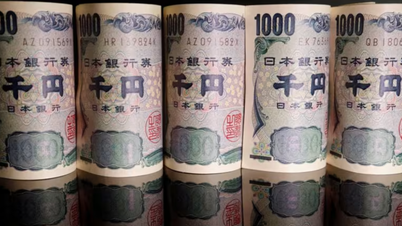











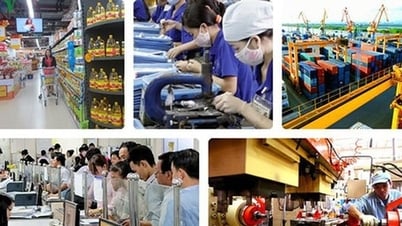


![[Photo] Prime Minister Pham Minh Chinh receives Swedish Minister of International Development Cooperation and Foreign Trade](https://vphoto.vietnam.vn/thumb/1200x675/vietnam/resource/IMAGE/2025/5/12/ae50d0bb57584fd1bbe1cd77d9ad6d97)
![[Photo] Prime Minister Pham Minh Chinh works with the Standing Committee of Thai Binh Provincial Party Committee](https://vphoto.vietnam.vn/thumb/1200x675/vietnam/resource/IMAGE/2025/5/12/f514ab990c544e05a446f77bba59c7d1)






































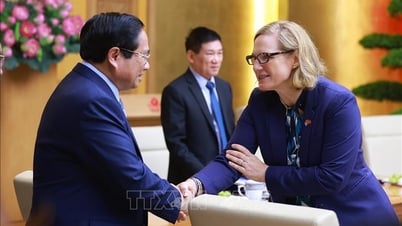










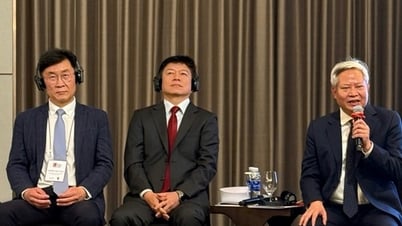



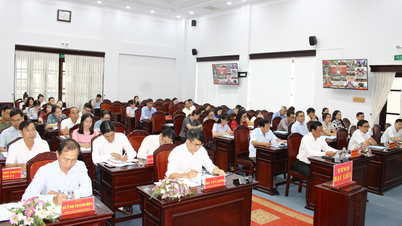












Comment (0)